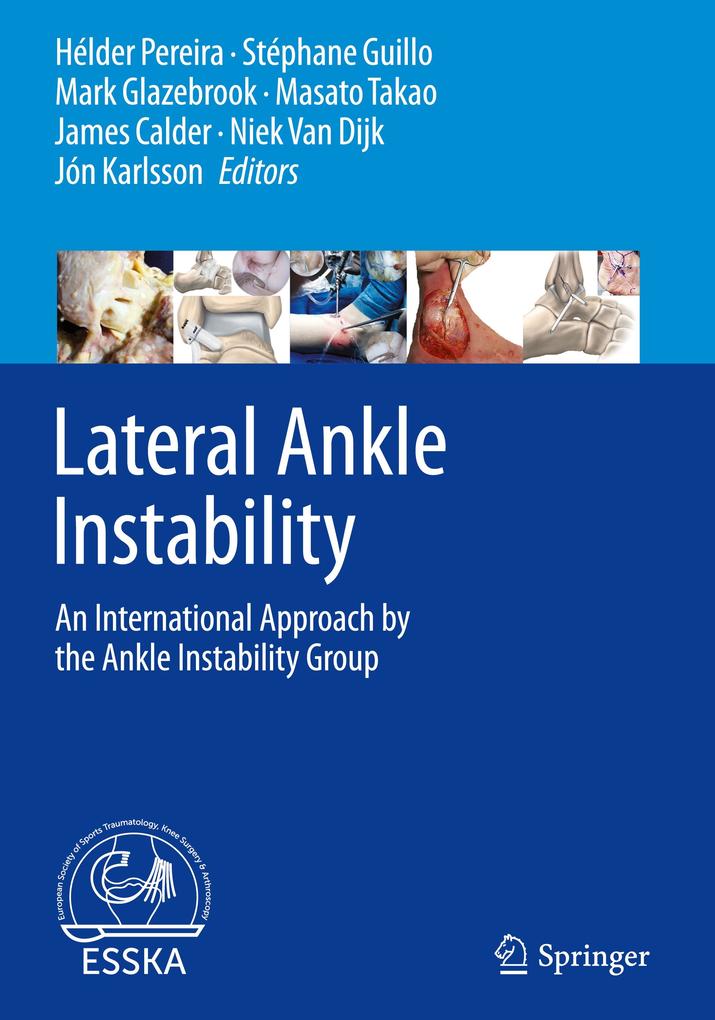
Zustellung: Mo, 27.01. - Do, 30.01.
Versand in 1-2 Wochen
VersandkostenfreiBestellen & in Filiale abholen:
This superbly illustrated, up-to-date reference textbook covers all aspects of ankle instability and its management. Readers will find extensive information on biomechanics, injury prevention, current strategies for conservative treatment, and established and emerging surgical techniques.
The most recent procedures, particularly those which are minimally invasive and arthroscopically assisted, are described and discussed in depth. Detailed attention is also devoted to controversies such as the indications and timing for conservative or surgical treatment, the current and future roles of arthroscopy, the definition of "anatomic" repair, and the upcoming concept of "anatomic reconstruction" (replication of anatomy by using a graft).
The book is published in cooperation with ESSKA, and the chapter authors include clinicians and scientists working in the field of foot and ankle orthopaedics and sports medicine from across the world. All who are involved in the care of patients suffering from ankle instability, including amateur and high-level athletes, will find Lateral Ankle Instability to be an excellent source of knowledge and a valuable aid to clinical practice.
Inhaltsverzeichnis
Part I. Introduction. -
Anatomy of the Ankle ligaments. - Anatomic perspective on the role of inferior extensor retinaculum in lateral ankle ligament reconstruction. - Biomechanics of the Ankle. - History and Clinical Examination of Lateral Ankle Instability. - Diagnostic Imaging. - Microinstability of the ankle. - Assessment of subtalar instability. - Combined medial pathology in patients with lateral chronic ankle instability - Rotational instability of the ankle? . -
Part II. - Non-operative approach. -
Prevention Strategies and Prehab For lateral Ankle Instability. - Current Concepts in Ankle Sprain Treatment. - Level of evidence for nonoperative treatment on Chronic ankle instability
. - Part III. - Surgical Treatment. -
Surgical treatment for acute ankle sprain state of the art. - Current published evidence to support open surgical treatment of chronic ankle instability. - Anatomic open Repair procedures: Description of the Broström-Gould technique. - Reinforcement of the Broström Technique: When and how to do it? . - Collateral lateral ligament repair: anatomic ligaments reinsertion with augmentation using an extensor retinaculum flap. - Anatomical reconstruction: Open procedure to percutaneous procedure (P-AntiRoLL). - Lateral Ankle Instability: An International Approach by the Ankle Instability Group. - Anatomic open Repair procedures: Periosteal flap. - Ankle Ligament Injuries Long-term Outcomes After Stabilising Surgery. - Level of evidence for mini-invasive treatment of chronic ankle instability. - Arthroscopic Capsular shrinkage. - Arthroscopic Assisted Repair of Chronic Lateral Ankle Instability. - Arthroscopic ATFL repair with percutaneous Gould augmentation. - The Arthroscopic all inside knotless option. - Arthroscopic all inside ATFL repair. - All Inside Brostrom Gould Technique. - Anatomical reflections when considering tunnel placement for ankle ligament reconstruction. - ATFL anatomical reconstruction. - Arthroscopic anatomical reconstruction of the lateral ankle ligaments. - Arthroscopic AntiRoLL technique. - The plantaris tendon option for anatomical reconstruction. - Rehabilitation after acute lateral ankle ligament injury and after surgery. - Goal-based protocol for rehabilitation. - Rehabilitation options for chronic ankle instability: what is new? . -
Part IV. - Further implications of ankle instability. -
Lower Extremity Alignment and Ankle Instability. - Ankle instability and gastrocnemius tightness. - Concurrent Pathology and Ankle instability. - Non-Biological Adjuncts for Ankle Stabilization. - Unique Perspective of care of the elite athlete. - Assessing outcomes for Treatment of Chronic Ankle Instability. - Consensus and Algorithm in the approach to patients with chronic lateral ankle instability.
Produktdetails
Erscheinungsdatum
29. April 2021
Sprache
englisch
Auflage
1st ed. 2021
Seitenanzahl
420
Herausgegeben von
Hélder Pereira, Stéphane Guillo, Mark Glazebrook, Masato Takao, James Calder, Niek Van Dijk, Jón Karlsson
Verlag/Hersteller
Produktart
gebunden
Abbildungen
XXVI, 392 p. 251 illus., 225 illus. in color.
Gewicht
1078 g
Größe (L/B/H)
260/183/27 mm
Sonstiges
HC runder Rücken kaschiert
ISBN
9783662627624
Entdecken Sie mehr
Bewertungen
0 Bewertungen
Es wurden noch keine Bewertungen abgegeben. Schreiben Sie die erste Bewertung zu "Lateral Ankle Instability" und helfen Sie damit anderen bei der Kaufentscheidung.










